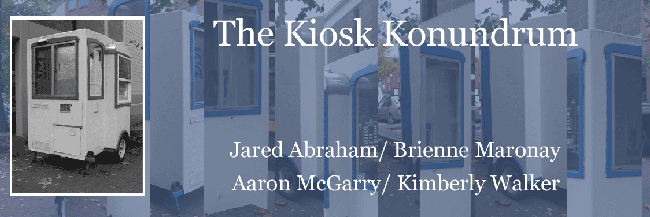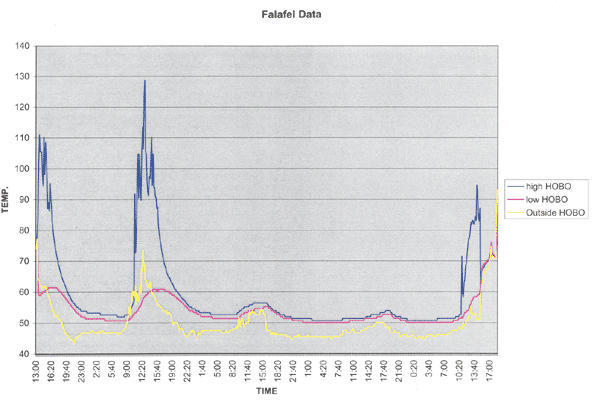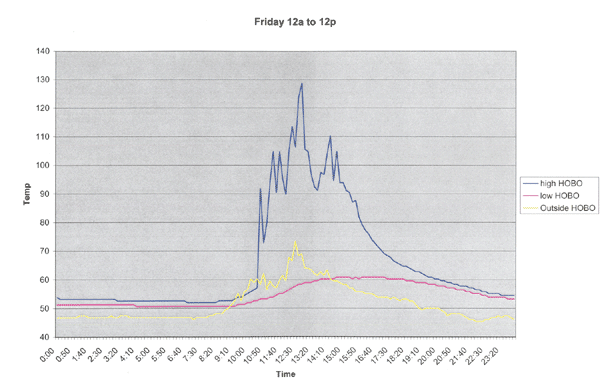
The data that was collected using three temperature dataloggers is rendered on the graph shown here.



Alexander did not work Saturday or Sunday, therefore there was no extra heat being introduced into the structure on those days. Due to the lack of internal heat gain through cooking appliances and human interaction (the latent heat produced by human beings) we are able to judge how well the structure really did retain heat. In fact, the internal temperatures fluctuated only slightly, running quite parallel to outdoor temperatures, resting about five degrees warmer. This shows that the building envelope was sufficient enough to maintain its internal heat gain over a period of two days without ever fully equalizing with the outside temperatures.
In the morning on Friday, the outside temperature did in fact reached a brief equilibrium, then increased past the internal temperature of the kiosk. This, according to our speculations, must have happened due to human intervention. For example, Alexander might have opened up the door and/or windows in the morning thus resulting in an influx of cooler, outside air temperatures. This condition is drastically altered roughly two hours later when he must have fired up the burners of his cooking stove. This action could account for the recorded ninety-plus temperatures that ensued.
Our hypothesis stated that during the course of the night the internal temperature of the falafel kiosk would reach equilibrium with the outdoor temperature. For the most part, we found that our hypothesis was proven incorrect, given that the inside temperature of the high data logger always remained at least five to ten degrees higher than the outside temperature. This proves that the building envelope was much more effective in retention of heat than we had initially predicted. Certainly, Alexander putting the insulation panels up into the windows at night helps to protect the broken windows from shattering all over the kiosk, yet this action most assuredly has also kept the generated heat from radiating out of the structure during non-business hours.